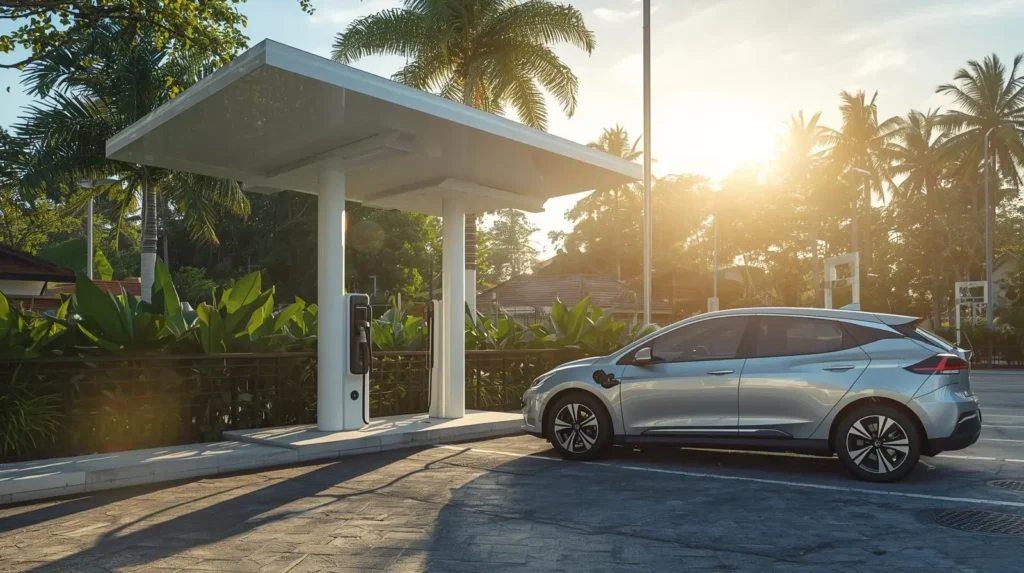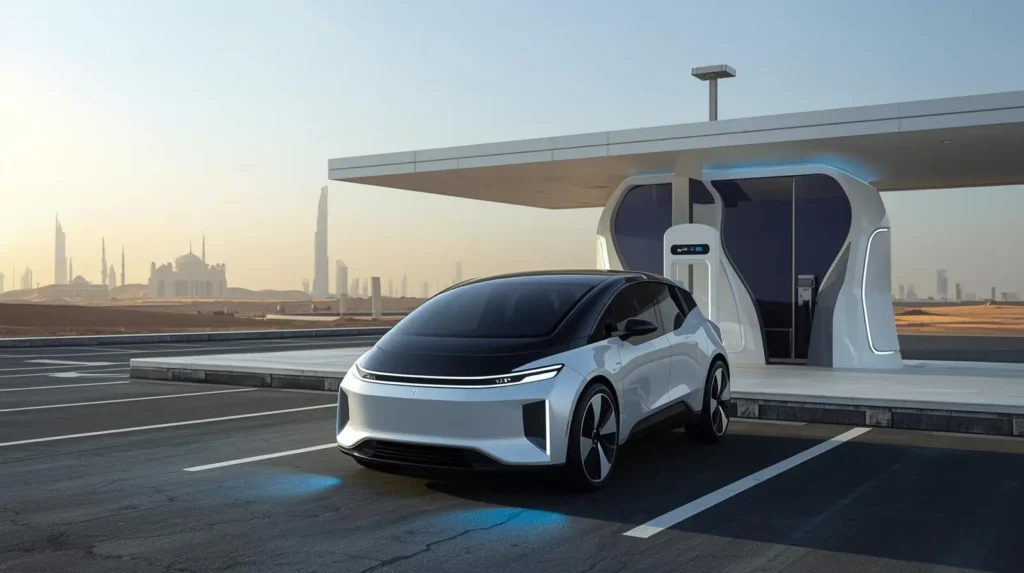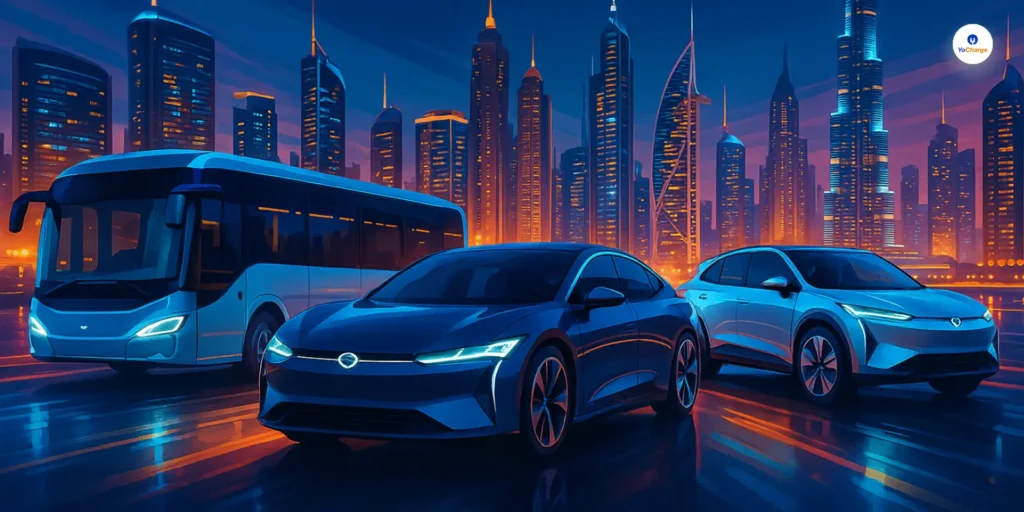
The future of electric mobility is at a critical point of the swing. With a slight change in external affairs, oil price hikes, climate change, electric vehicles have become an inevitable part of the solution. Different companies are entering the Indian market and various parts of the EV value chain; large scale execution efforts are still required as EVs are not mainstream yet. It is 2022, and it seems we have hit the inflexion point for EVs to take off full fledged and it’s the time we meet EV revolution. Though we are witnessing a significant lunge in plug-in-vehicles registration, still we have a long way to go. The potential roadblocks to overcome to establish a far-reaching EV charging network.
For a sustainable future, EVs have taken importance. Is India ready for electric mobility? Electric vehicles are revolutionising the world at a very fast pace. The world of road transport is affected by the new face of the EV launch. The global EV market has grown 43% annually on average over the last five years. In 2019 the market penetration rate of EVs stood at about 2.6%. During the coming decade, this is expected to explode. As per Deloitte predictions, the annual new sales of EVs will top USD 30 million by 2030.
EVs are of great interest in India as the e-mobility of road transport serves multiple purposes. It is a Green Industrial policy that supports a post-pandemic economic recovery. The main focus is on reducing oil imports and strengthening energy security. Moreover zero emission and pollution is need of the hour to address environment issues such as reducing air pollution and mitigating climate change. It is an important carbon emission reduction measure, and a significant focus is on greening power sectors.
India’s government has a lot of work to meet EV revolution!!
The circular economy policy success is not guaranteed. It took China a decade to regulate development to become a market leader in LIB recycling. India’s government has a lot of work to do, from improving regulations to battery collection, transport, and shortage, to coordinating training programs to battery handling, crafting, labelling and traceability requirements to clarify contractual and ownership models, drive efficiencies and cost reductions.
It is crystal clear that EVs are set to transform global road transport, and India will be its colossal market for deployment. India will soon become a manufacturing hub that can contribute to both EV value chains and battery recycling.
The government needs to realise barriers, adjust regulations, and direct institutional frameworks to accommodate those barriers and attract larger investments.
Moving diversely but together towards EV revolution
Leaving transport decisions to people is quite understandable and necessary. With global warming and pollution rising, people inevitably switch to EVs. This is one cause, but if we look at the other side, congestion, fuel price hike, affordability, infrastructure and transit system also leaves a drastic impact on Indian transportation. Localised issues need to be sorted, and people buying expensive EVs depend on citizens’ income levels. A little local research and development is necessary to bring EV prices down. This makes sense to local universities and industrial hubs to study how to bring the cost down.

The ecosystem of multi-stakeholder players plays an important role in planning future production based on a clear understanding and local objectives and plans. In a huge country with vast aspirations, the critical element is missing: objective evaluation of the states. By looking at this, the world economic forum and the ola mobility institute have supplied a value-chain framework with three major integrations – electric vehicles, charging and the surrounding network. They have drafted policies around EV for Indian states and union territories. Overall sustainability from cradle to grave can be ensured through this framework in each city. It will also help highlight gaps in the value chain and the need for investment.
Operationalising mass transition to electric mobility in the country of 1.3 billion people is not an easy task. A strong common vision, objective framework, policies and public-private collaboration is the need of the hour. These changes will guide our leaders and show them a clear action for our future generations.
Buckle up, EVs are ready to take off.

In September 2021, Ola electric sold e-scooters worth 1,100 crores in just a span of two days. This translates to a sale of approximately 85,000 e-scooters, costing around 1.3 lakh per scooter. Compared to the total number of vehicles on the road, a sizable number of around six lakhs is just a big number. This indicates a fundamental shift in consumer behaviour, and we can see an increased incline towards electric vehicles.
Here are some key aspects propelling to EV adoption
- Progress in product innovation
- New model alert
- The total cost of ownership perspective
- Positive regulatory
Where does the opportunity lay before us!!
The EV mass adoption does not just present a promising mobility opportunity and creates a ripple effect in the direction of innovations in states such as FinTech and EdTech.
If we talk about mobility opportunity following points come under it:
- Connected vehicles and telematics. Connected vehicles generate extensive data in varied cases.
- Creating robust charging or swapping infrastructure
- Battery management system
- Fleet management for commercial vehicles
- Mobility as a service (MaaS)
Wrapping up:
With legacy players in line and the emergence of disruptive startups, the future of electric mobility is bright. It is the right time for the entire ecosystem to jump on the EV bandwagon to launch mass adoption. Progress in product innovation and charging station infrastructure setup and battery swapping has sped up.
Four-wheelers have some catching up in terms of cost and charging station. However, the government is entirely into meeting the EV station needs and luring businesses to start. The future of electric mobility in India is in full swing. It promises a green and sustainable future with a better scope to intelligent mobility landscape.



